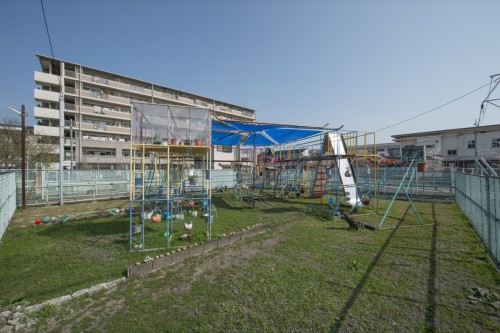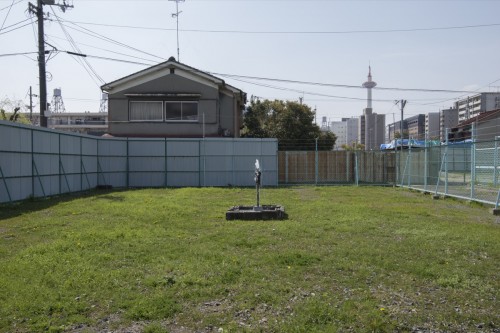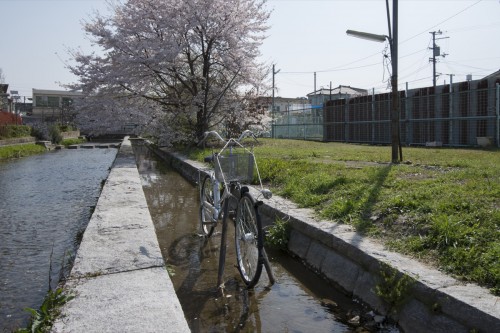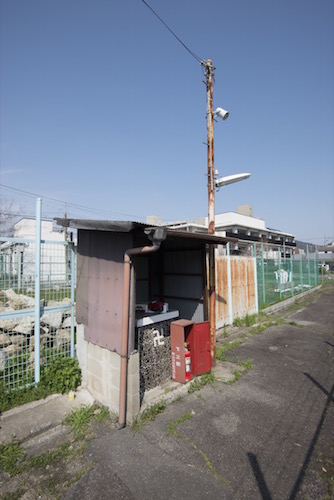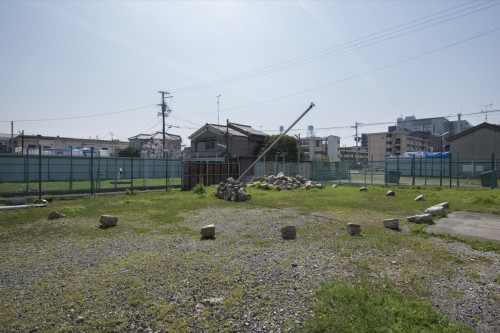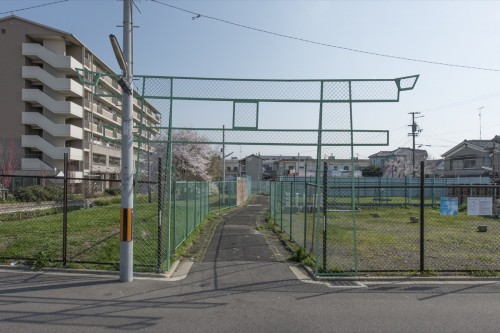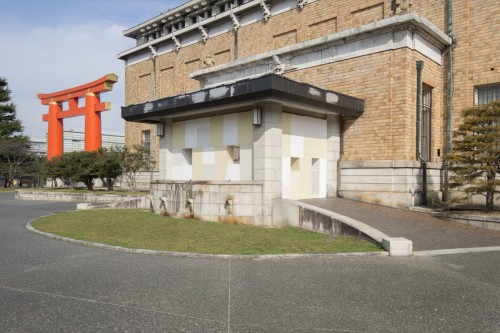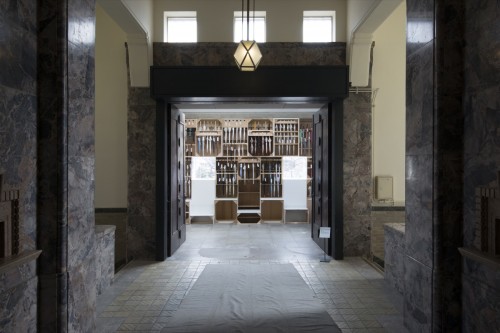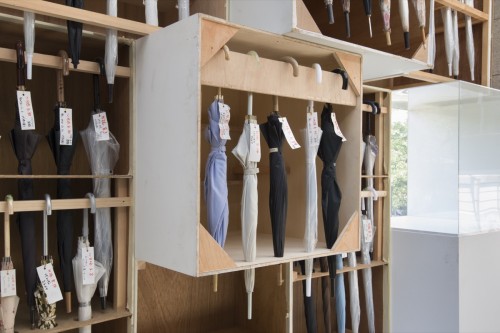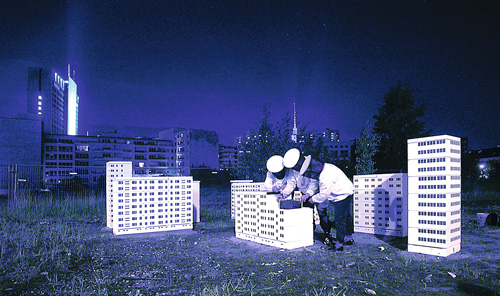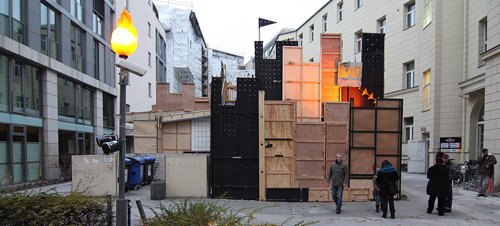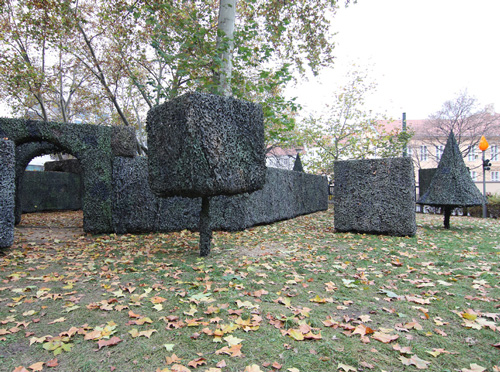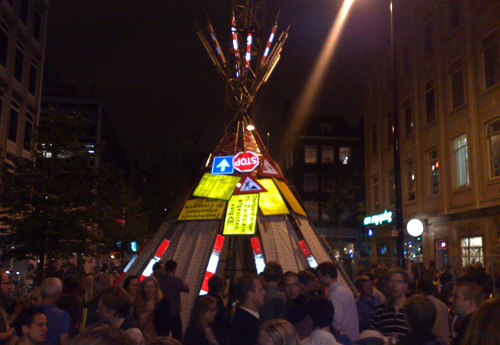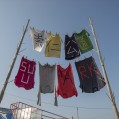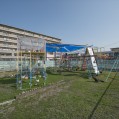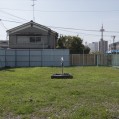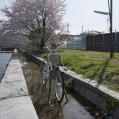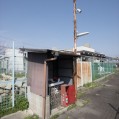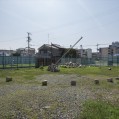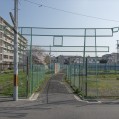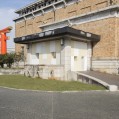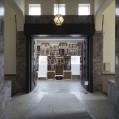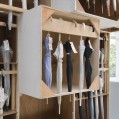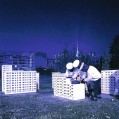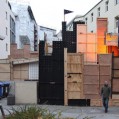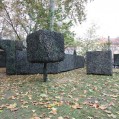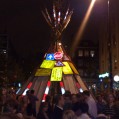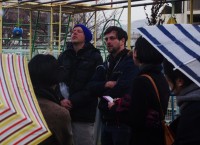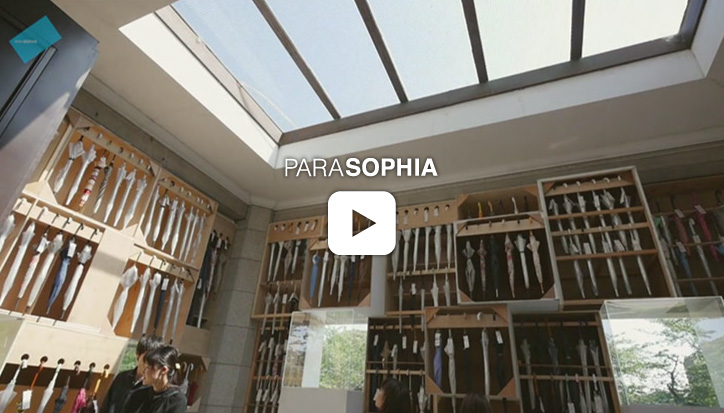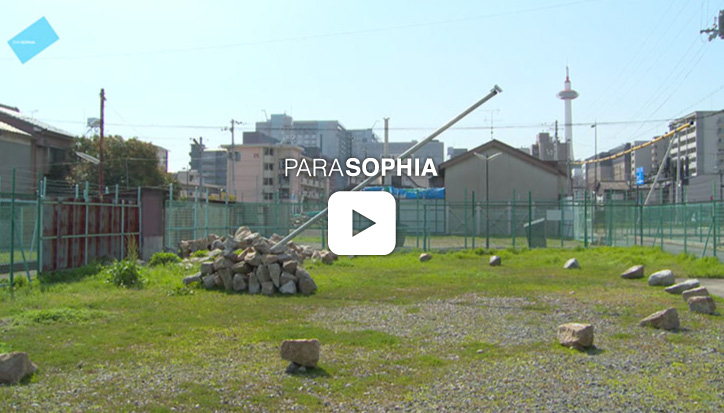Hoefner/Sachs
Franz Hoefner
b. 1970 in Starnberg, Germany; based in Berlin
Harry Sachs
b. 1974 in Stuttgart, Germany; based in Berlin
Works in the exhibition
Museum Casino, 2015
Installation with materials left over from other exhibitions, objects from the museum’s lost and found, etc.
Installed at Kyoto Municipal Museum of Art
Suujin Park, 2015
Installation with fences, potted plants, playground equipment, found objects, etc.
Installed in areas near the cross streets of Kawaramachi and Shiokoji Streets
See all installation views at higher resolution: www.flickr.com/photos/parasophia/sets/72157654537434984
Hoefner/Sachs is Franz Hoefner and Harry Sachs, an artist duo from Berlin that turns issues related to urban architecture and housing into projects and performances through artistic means imbued with a sharp, crazy sense of humor. Many of their works call the architectural border between “housing units” as mere shelters and “homes” for long-term inhabitation into question. One example is their Honey Neustadt project from 2006, where the artists made miniature housing units out of Styrofoam beehive frames, modeled after the prefabricated working-class housing developments found in Halle-Neustadt, a commuter town for chemical plant workers built to the west of Halle in the former East Germany from the 1960s to the late 1980s. The artists built a bee colony out of these Styrofoam tower block models as a home for the swarm of a million honeybees that emerged in Berlin at that time. The honey collected from Honey Neustadt was packaged and sold as both products and artworks.
For Parasophia: Kyoto International Festival of Contemporary Culture 2015, Hoefner/Sachs present two installations based on their research in Kyoto. At Kyoto Municipal Museum of Art they present Museum Casino, in which they reuse and reconfigure materials used in past exhibitions to create a space (a “casino”) at one of the museum’s entrances, where museumgoers and passersby can stop in. In Suujin Park, they create constructions from leftover building materials and scraps in the vacant lots surrounded by fences that have cropped up with the redevelopment of Suujin, as temporary monuments celebrating, from a non-Japanese perspective, the spontaneous creativity of a community that has long been the target of discrimination. The artists focus their attention on issues common to cities around the world and act as outside agents or “foreign bodies,” creating bricolage works that use materials found at the sites in a transformative and interventionary manner. Hoefner/Sachs’s approach carries on the legacy of the 1950s while remaining a fresh and valid mode of dialogue worthy of serious scrutiny.
-
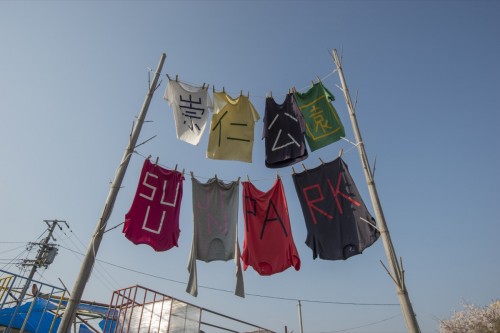
Hoefner/Sachs, Suujin Park, 2015. Installation view in areas near the cross streets of Kawaramachi and Shiokoji Streets in Kyoto for Parasophia: Kyoto International Festival of Contemporary Culture 2015. Photo by Norimasa Kawata




